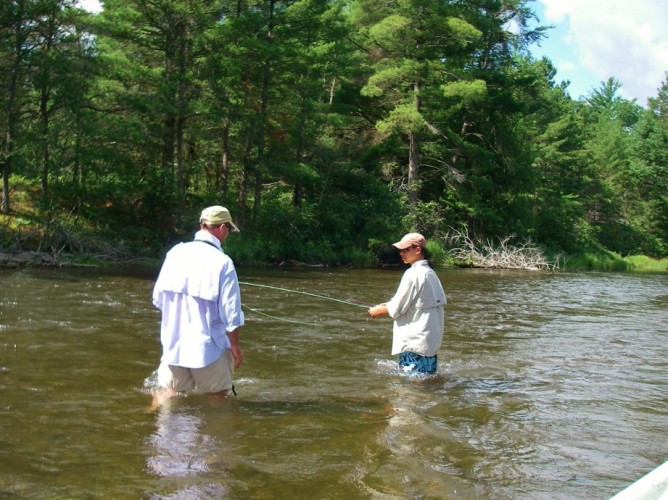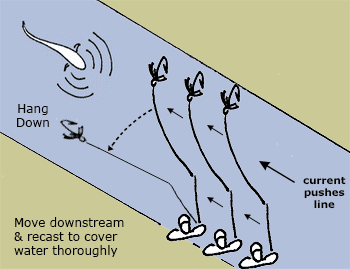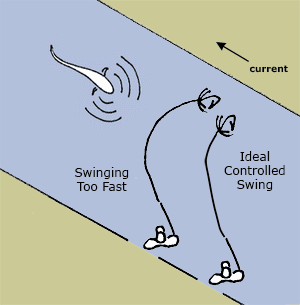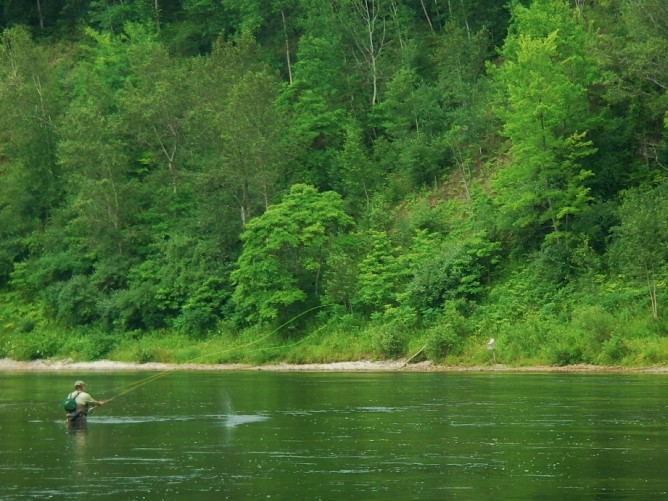Black caddis are found in northern Michigan rivers anytime from late April through mid-July and can present themselves either heavily or lightly any day in between. It seems that as the season progresses, these “Mother’s Day caddis” or Grannom caddis tend to be heavier in density right at dusk and even into dark.
The adults bounce around on the water’s surface and don’t get much attention from fish because of their erratic nature of flight and the amount of wasted energy that sometimes goes into chasing them. But of importance are the adult female caddis with their bright green egg sack that oviposit/lay eggs by diving under water. These are the same caddis you may have witnessed crawling on vegetation or even your waders on a recent fishing trip – I often find them on my drift boat’s oar blades.
This easy and quick to tie pattern is effective for fishing wet any time the hatch is present, and even at times a day or two after a heavy emergence has occurred. The bright wire imitates the egg sack while providing some weight. Meanwhile, the soft hackle undulates under the water imitating the wing and antennae of the diving caddis.
Fish this pattern by casting down-stream and across on an approximate 45 degree angle. Let the water swing that fly –controlled– to the hang-down position (directly downstream from you). Because there is little slack in the leader when fished this way, the takes can be exhilarating, even by small fish, as all the energy is felt in the rod. Just gently lift the rod up to the side and the fish should be on.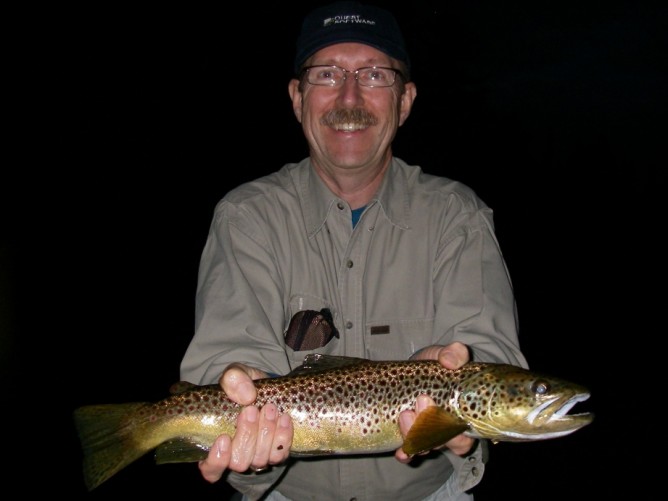
If you have ever been fishing when a mayfly hatch is occurring and the fish aren’t feeding on adults, try a mayfly emerger pattern. If that fails to work, look to see if there are any black caddis around – if so, this pattern might be the ticket to a bent rod.
Learn more about fishing soft hackle flies by reading Swinging Soft Hackle Flies
G.B. Soft Hackle / Diving Caddis Recipie
Hook: Gamakatsu S10-2S #12
Thread: Uni 8/0 Olive Dun
Tag: Ultra Wire – FL Chartreuse – BR
Body: Peacock Herl
Wing: Ruffed Grouse or Starling Feather
Tying Instructions
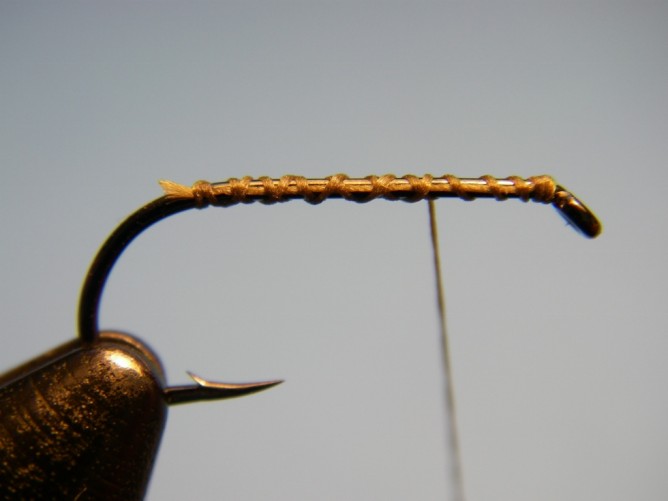 Step 1. Wrap a thread base from behind the eye to above the hook barb.
Step 1. Wrap a thread base from behind the eye to above the hook barb.
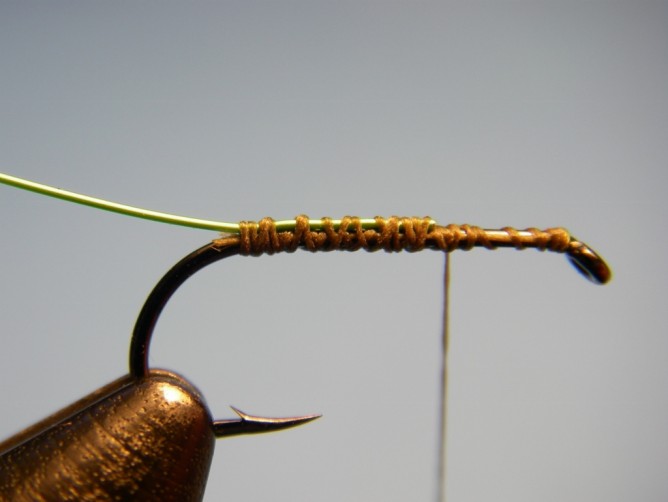 Step 2. Starting half-way down the hook shank, tie in wire on top of hook and wrap back to above barb.
Step 2. Starting half-way down the hook shank, tie in wire on top of hook and wrap back to above barb.
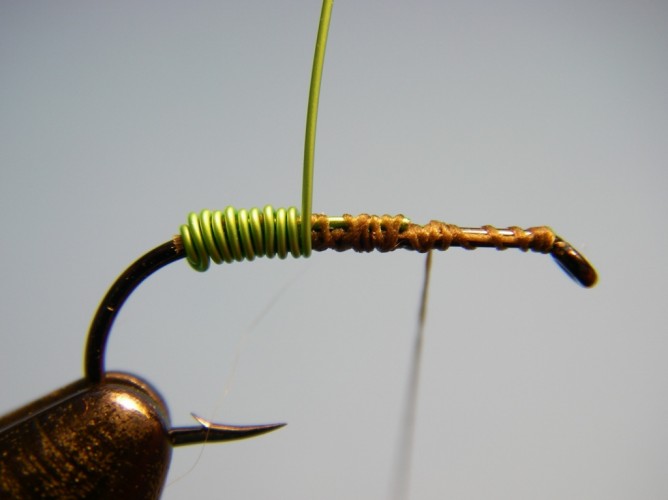 Step 3. Advance thread back to mid-shank. Wind wire tightly forward t to mid-shank and tie off.
Step 3. Advance thread back to mid-shank. Wind wire tightly forward t to mid-shank and tie off.
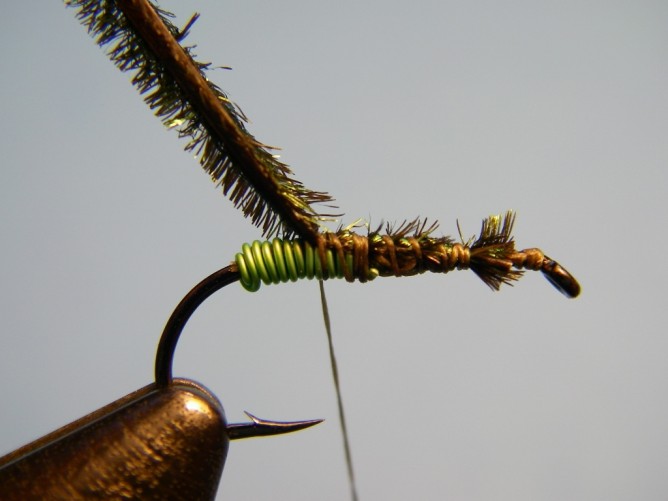 Step 4. Tie in 4 peacock herl strands by the tips from just behind the eye to above the hook point.
Step 4. Tie in 4 peacock herl strands by the tips from just behind the eye to above the hook point.
Step 5. Wrap the herl around the thread to make it more durable.
Fluff/tease with a tooth brush, then wind forward towards the hook eye and tie off.
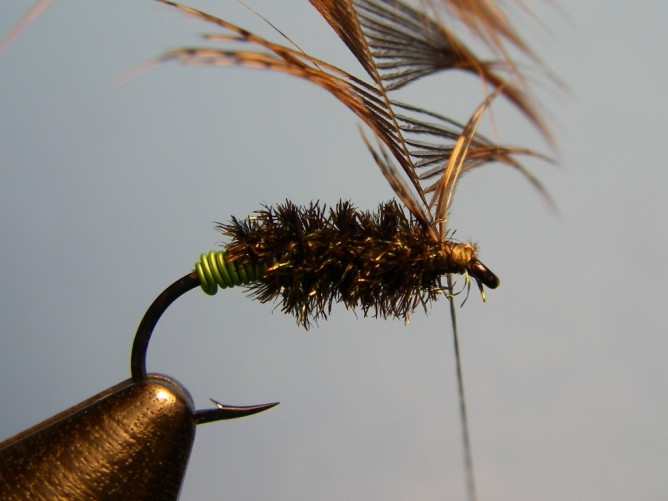
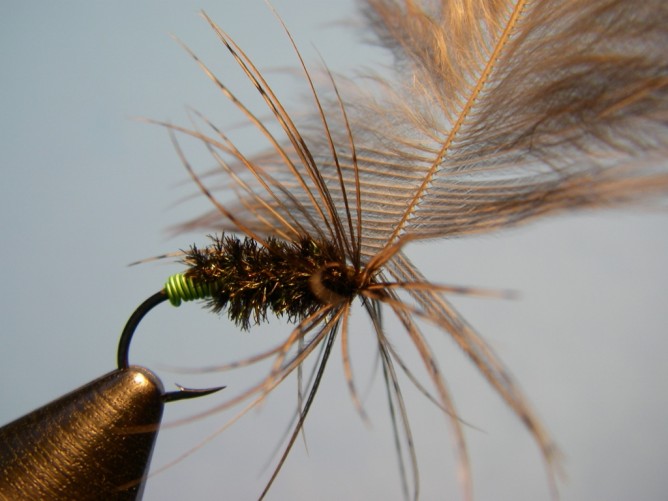 Step 6. Tie in a hackle feather by the tip and make two full wraps. Make sure the hackle fibers –
Step 6. Tie in a hackle feather by the tip and make two full wraps. Make sure the hackle fibers –
when swept back – do not extend more than a hook gape’s distance beyond the bend of the hook.
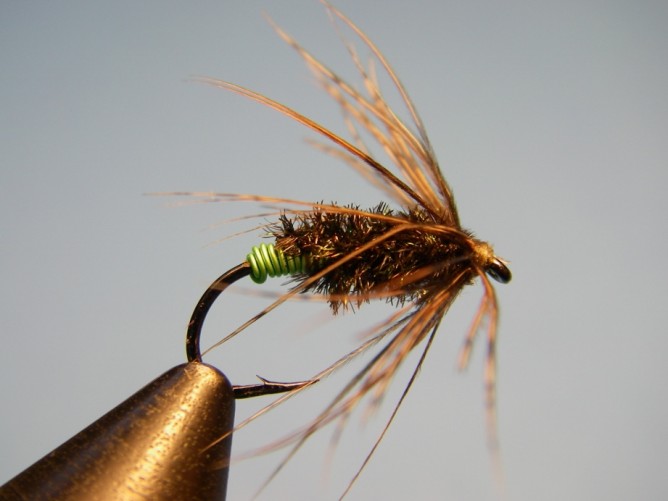 Step 7. Whip finish. Finished Green Butt Soft Hackle – Diving Caddis. It’s quick, easy and effective.
Step 7. Whip finish. Finished Green Butt Soft Hackle – Diving Caddis. It’s quick, easy and effective.

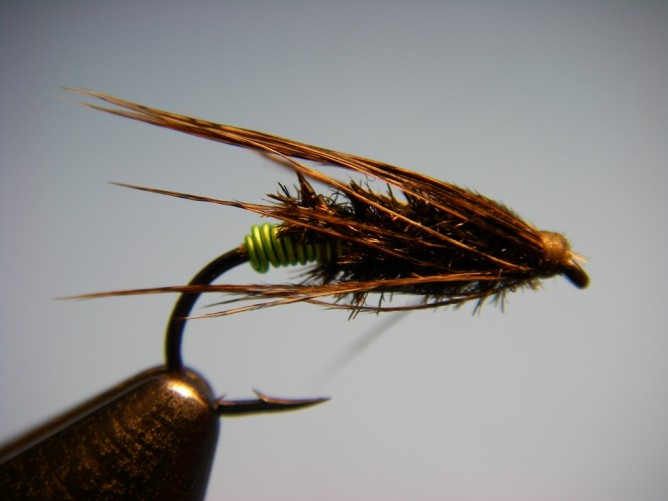
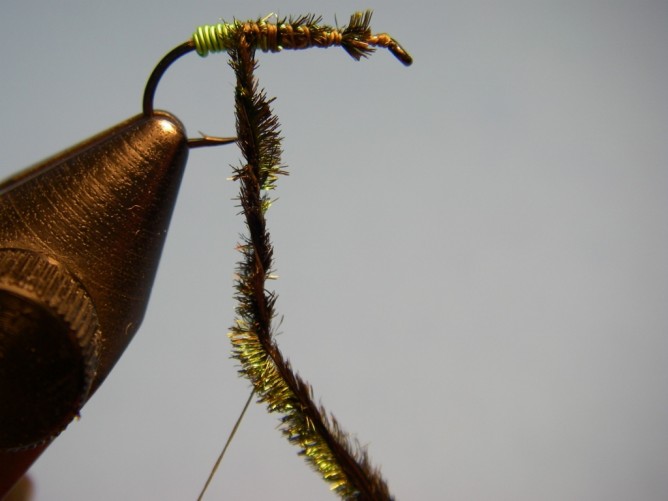
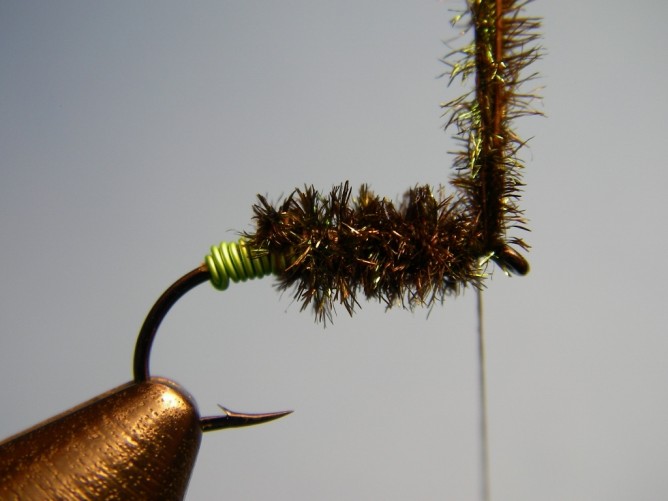
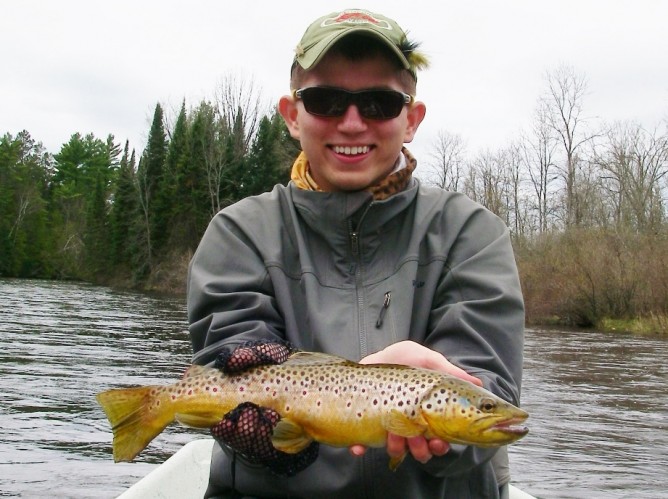
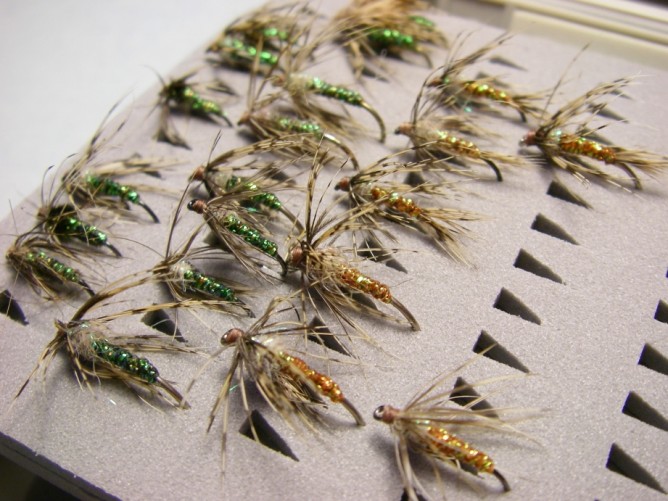 A soft hackle fly is a type of wet fly – it is not a nymph, streamer or dry. The idea is to present a pattern that looks like an aquatic insect below the surface – perhaps a diving caddis, a spent mayfly spinner, a mayfly emerger or even an attractor – which the fish can better see under the surface. The soft hackle typically has a longer, spidery-like construction that when fished under the surface and across the river, moves and undulates, looking like natural food.
A soft hackle fly is a type of wet fly – it is not a nymph, streamer or dry. The idea is to present a pattern that looks like an aquatic insect below the surface – perhaps a diving caddis, a spent mayfly spinner, a mayfly emerger or even an attractor – which the fish can better see under the surface. The soft hackle typically has a longer, spidery-like construction that when fished under the surface and across the river, moves and undulates, looking like natural food.